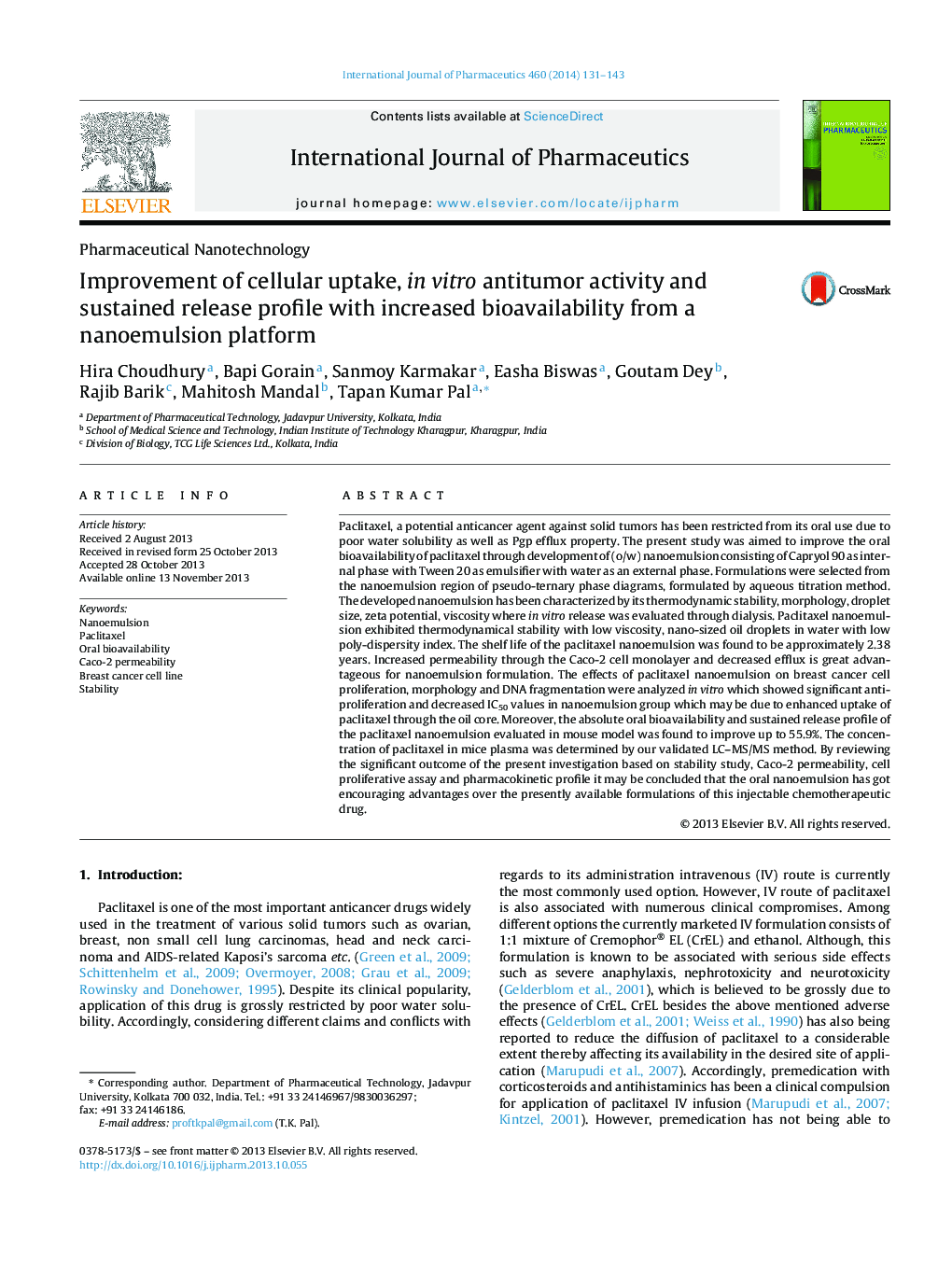| Article ID | Journal | Published Year | Pages | File Type |
|---|---|---|---|---|
| 2502005 | International Journal of Pharmaceutics | 2014 | 13 Pages |
Paclitaxel, a potential anticancer agent against solid tumors has been restricted from its oral use due to poor water solubility as well as Pgp efflux property. The present study was aimed to improve the oral bioavailability of paclitaxel through development of (o/w) nanoemulsion consisting of Capryol 90 as internal phase with Tween 20 as emulsifier with water as an external phase. Formulations were selected from the nanoemulsion region of pseudo-ternary phase diagrams, formulated by aqueous titration method. The developed nanoemulsion has been characterized by its thermodynamic stability, morphology, droplet size, zeta potential, viscosity where in vitro release was evaluated through dialysis. Paclitaxel nanoemulsion exhibited thermodynamical stability with low viscosity, nano-sized oil droplets in water with low poly-dispersity index. The shelf life of the paclitaxel nanoemulsion was found to be approximately 2.38 years. Increased permeability through the Caco-2 cell monolayer and decreased efflux is great advantageous for nanoemulsion formulation. The effects of paclitaxel nanoemulsion on breast cancer cell proliferation, morphology and DNA fragmentation were analyzed in vitro which showed significant anti-proliferation and decreased IC50 values in nanoemulsion group which may be due to enhanced uptake of paclitaxel through the oil core. Moreover, the absolute oral bioavailability and sustained release profile of the paclitaxel nanoemulsion evaluated in mouse model was found to improve up to 55.9%. The concentration of paclitaxel in mice plasma was determined by our validated LC–MS/MS method. By reviewing the significant outcome of the present investigation based on stability study, Caco-2 permeability, cell proliferative assay and pharmacokinetic profile it may be concluded that the oral nanoemulsion has got encouraging advantages over the presently available formulations of this injectable chemotherapeutic drug.
Graphical abstractFigure optionsDownload full-size imageDownload high-quality image (224 K)Download as PowerPoint slide
